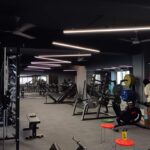The 1920s witnessed a significant transformation in men’s fashion, characterized by a shift away from the conservative styles of previous decades. This period, known as the “Roaring Twenties,” was marked by a sense of liberation and rebellion against traditional societal norms, which was reflected in the bold and innovative clothing choices of the time. Men’s fashion in the 1920s departed from the formal and structured attire of the Victorian and Edwardian eras, adopting a more relaxed and casual approach.
This change was influenced by several factors, including the aftermath of World War I, the rise of the automobile industry, and the growing popularity of jazz music. Additionally, the increasing influence of Hollywood and movie stars played a significant role in shaping fashion trends during this period. The decade saw the emergence of new styles and trends that continue to influence men’s fashion to this day.
Sports and leisure activities gained popularity, further impacting clothing choices. The 1920s represented a pivotal moment in men’s fashion history, marking a period of significant sartorial innovation and change that reflected the evolving attitudes and lifestyles of the era.
Key Takeaways
- 1920s men’s fashion was characterized by a departure from traditional styles and a move towards more casual and comfortable clothing.
- The Roaring Twenties had a significant influence on men’s fashion, with a focus on individuality and self-expression.
- Key elements of 1920s men’s fashion included wide-legged trousers, tailored suits, and loose-fitting shirts.
- Popular accessories in 1920s men’s fashion included fedora hats, pocket squares, and suspenders, which added a touch of sophistication to the overall look.
- Hollywood played a major role in shaping 1920s men’s fashion, with leading actors and celebrities setting trends and influencing the way men dressed during that time.
The Influence of the Roaring Twenties on Men’s Fashion
The End of World War I and the Rise of Liberation
The end of World War I brought about a shift in societal attitudes, with a focus on living life to the fullest and embracing new experiences. This newfound sense of freedom was reflected in men’s fashion, with a move towards more relaxed and casual clothing that allowed for greater movement and comfort.
The Influence of Jazz Music
The influence of the jazz age also played a significant role in shaping men’s fashion during the 1920s. Jazz music was a symbol of rebellion and freedom, and its influence extended to the world of fashion. The vibrant and energetic spirit of jazz music was reflected in the bold and daring styles worn by men during this time.
A Time of Great Change and Innovation
The rise of speakeasies and the popularity of illegal alcohol during Prohibition also had an impact on men’s fashion, with a focus on clothing that was suitable for late-night parties and social gatherings. The Roaring Twenties was a time of great change and innovation in men’s fashion, with a focus on embracing new styles and breaking away from traditional norms.
Key Elements of 1920s Men’s Fashion

The 1920s saw the emergence of several key elements that defined men’s fashion during this era. One of the most notable changes was the move towards more relaxed and casual clothing. The traditional three-piece suit gave way to looser-fitting suits with wider trousers and shorter jackets, reflecting a more relaxed and informal approach to dressing.
This shift towards casual clothing was also reflected in the use of more comfortable fabrics such as tweed, flannel, and wool, which allowed for greater movement and flexibility. Another key element of 1920s men’s fashion was the focus on bold and daring styles. The use of bright colors, bold patterns, and statement accessories became increasingly popular during this time.
Men began to experiment with new styles and silhouettes, embracing a more expressive approach to dressing. The influence of sports and leisure activities also had an impact on men’s fashion, with a focus on clothing that was suitable for outdoor pursuits such as golf, tennis, and yachting. This emphasis on practicality and functionality led to the rise of sportswear-inspired clothing that was both stylish and comfortable.
Popular Accessories in 1920s Men’s Fashion
| Accessory | Popularity |
|---|---|
| Fedora Hat | Very Popular |
| Pocket Watch | Highly Popular |
| Monocle | Popular among the elite |
| Suspenders | Common |
| Bowler Hat | Less Popular |
Accessories played a crucial role in defining men’s fashion during the 1920s. One of the most iconic accessories of this era was the fedora hat, which became synonymous with the stylish and sophisticated man about town. The fedora was often worn at a jaunty angle and became a symbol of elegance and refinement.
Another popular accessory was the pocket square, which added a touch of flair and personality to a man’s outfit. Pocket squares were often brightly colored or patterned, adding a pop of color to an otherwise understated ensemble. The 1920s also saw the rise of statement accessories such as cufflinks, tie pins, and collar bars, which added a touch of sophistication to men’s formal attire.
These accessories were often made from precious metals such as gold or silver and were adorned with intricate designs and embellishments. Another popular accessory was the wristwatch, which became increasingly popular during this time. Wristwatches were seen as a symbol of modernity and sophistication, and they were often worn as a statement piece that reflected a man’s personal style.
The Impact of Hollywood on 1920s Men’s Fashion
The rise of Hollywood had a significant impact on men’s fashion during the 1920s. Movie stars such as Rudolph Valentino, Douglas Fairbanks, and Charlie Chaplin became style icons, influencing men’s fashion trends with their on-screen personas. Hollywood glamour and sophistication became synonymous with men’s fashion during this era, with a focus on tailored suits, elegant evening wear, and polished accessories.
The influence of Hollywood extended beyond the silver screen, with movie stars setting trends that were emulated by men around the world. The popularity of Hollywood also led to an increased focus on grooming and personal appearance. Men began to pay more attention to their grooming habits, with a focus on well-groomed hair, clean-shaven faces, and polished shoes.
The rise of celebrity culture also led to an increased interest in fitness and physical appearance, with many men aspiring to emulate the athletic physiques of their favorite movie stars. The impact of Hollywood on 1920s men’s fashion cannot be overstated, with movie stars setting trends that continue to influence men’s style to this day.
The Evolution of 1920s Men’s Fashion

The Shift to Casual Elegance
The 1920s marked a significant evolution in men’s fashion, with a move towards more relaxed and casual clothing that reflected the changing attitudes and lifestyles of the time. This era saw a departure from the formal and structured clothing of previous decades, with a focus on looser-fitting suits, comfortable fabrics, and bold styles.
The Rise of Sportswear-Inspired Fashion
The influence of sports and leisure activities also had an impact on men’s fashion, leading to the rise of sportswear-inspired clothing that was both stylish and practical.
Embracing Individuality and Self-Expression
The evolution of 1920s men’s fashion also saw a greater emphasis on individuality and self-expression. Men began to experiment with new styles and silhouettes, embracing a more expressive approach to dressing. The use of bold colors, patterns, and statement accessories became increasingly popular during this time, reflecting a newfound sense of freedom and rebellion against traditional norms.
A Lasting Legacy in Men’s Fashion
The 1920s marked a turning point in men’s fashion, ushering in an era of innovation and change that continues to influence modern style.
Modern Influences of 1920s Men’s Fashion
The influence of 1920s men’s fashion can still be seen in modern style trends. The relaxed and casual approach to dressing that emerged during this era continues to influence contemporary menswear, with a focus on comfortable fabrics, looser silhouettes, and practical designs. The use of bold colors, patterns, and statement accessories also remains popular in modern men’s fashion, reflecting a continued emphasis on individuality and self-expression.
The impact of Hollywood on 1920s men’s fashion can also be seen in modern style trends, with movie stars continuing to set trends that are emulated by men around the world. The focus on grooming and personal appearance that emerged during this era has also had a lasting impact on modern menswear, with many men paying more attention to their grooming habits and physical appearance. The evolution of 1920s men’s fashion continues to influence contemporary style trends, making it a decade that has left an indelible mark on the world of menswear.
If you’re interested in learning more about 1920s men’s fashion, be sure to check out this article on FirstJot. They provide a comprehensive look at the trends and styles that were popular during this iconic era, offering valuable insights and inspiration for anyone looking to incorporate 1920s fashion into their wardrobe today.
FAQs
What were the key elements of 1920s men’s fashion?
During the 1920s, men’s fashion was characterized by tailored suits with wide-legged trousers, high-waisted pants, and double-breasted jackets. Accessories such as fedora hats, pocket squares, and suspenders were also popular.
What were the popular fabrics and colors for men’s clothing in the 1920s?
Wool was the most common fabric used for men’s suits and overcoats in the 1920s. Colors such as navy, grey, and brown were popular for suits, while pastel shades like pink, peach, and mint green were also fashionable for shirts and ties.
What type of shoes were popular for men in the 1920s?
Oxford and brogue shoes were the most popular styles for men in the 1920s. These shoes were typically made of leather and featured a low heel and rounded toe.
How did men style their hair in the 1920s?
In the 1920s, men often wore their hair short and slicked back with pomade. The popular hairstyle was the “undercut,” where the sides and back of the hair were cut short, while the top was left longer and slicked back.
What influenced men’s fashion in the 1920s?
The 1920s was influenced by the aftermath of World War I, the rise of jazz music, and the cultural shift towards modernity and liberation. These factors contributed to the relaxed and stylish nature of men’s fashion during this time.










